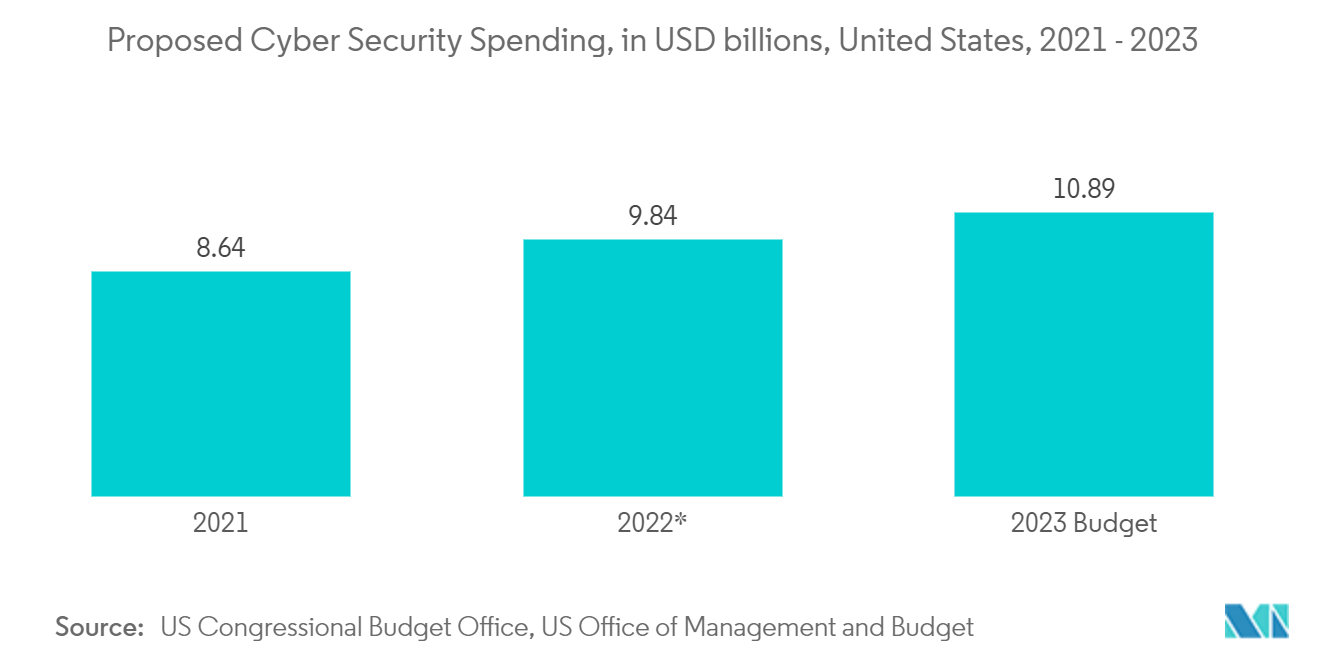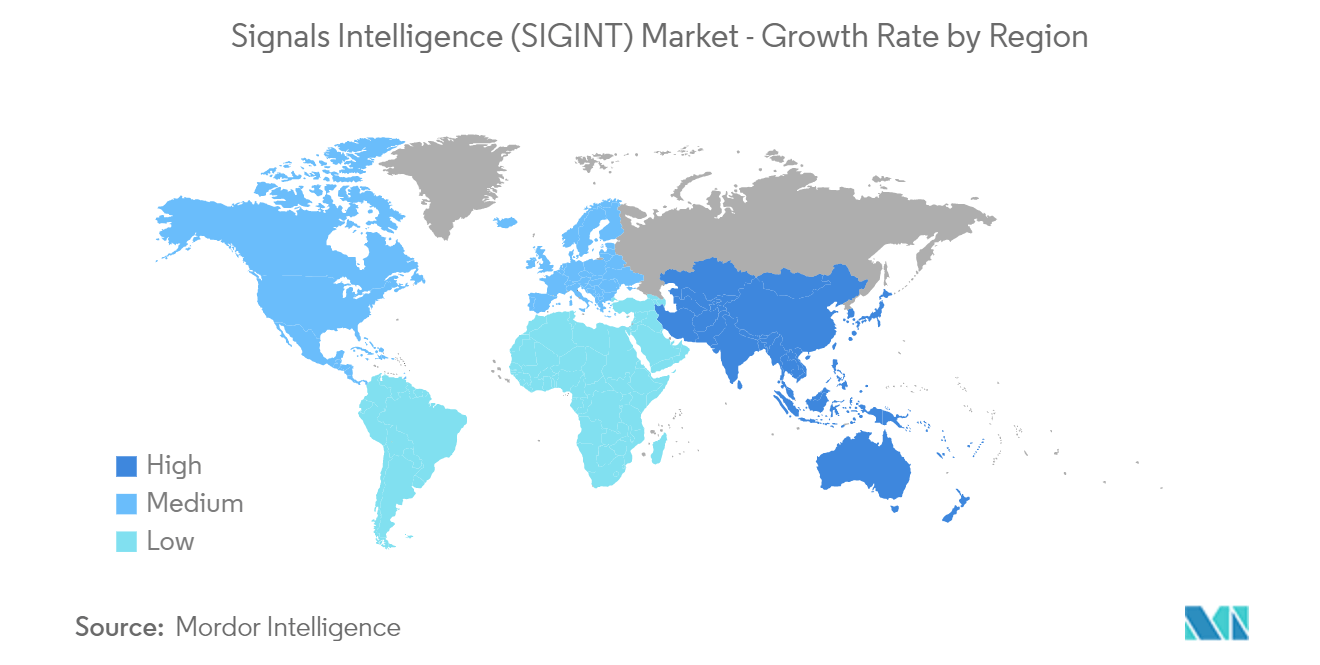Market Trends of Signals Intelligence (SIGINT) Industry
Demand for Cyber Intelligence Expected to Grow Significantly
- The aerospace and defense industry is gracefully embracing technological advancements like IoT, AI, ML, and Industry 4.0, amongst other technologies, which are digitizing the operations of the defense industry significantly. The defense sector is venturing into analytics and the adoption of cloud services, which would likely help them drastically enhance productivity.
- The increasing digitization of this industry is likely to create new avenues for cybercriminal activities, and the risk can be high compared to any other sector. Compromising existing cyber defense strategies within a country can gradually lead to substantial monetary and resource loss.
- According to the US Office of Management and Budget, the United States government proposed a USD 10.89 billion budget for cyber security for the present year, and an increase from the previous fiscal year. These federal cyber security resources are intended to support a broad-based cyber security policy aimed at safeguarding the government and improving the security of key infrastructure and essential technology.
- An increase in defense expenditure for improving the government's effectiveness, efficiency, and cybersecurity capabilities is also anticipated to be a critical factor driving the implementation of these solutions. Private vendors such as Signal AI raised USD 50 million to build on their AI platform and retrieve from more diversified data sources to extract insights across an ever-wider range of business queries.
North America is Expected to Dominate the Market
- North America is the highest spending region in terms of military and defense activities, and the expenditure of the United States primarily drives it. According to the US Department of Defense, The US Navy would spend around USD 58.48 billion on military personnel in the current year, accounting for almost 25% of its entire budget plan. In the same fiscal year, the US Army would spend around USD 69.07 billion on military personnel.
- Rising incidences of terrorist attacks in recent years have compelled the region's government to implement robust physical security strategies. Hence, the companies in the country are actively focused on their product innovation strategies to offer enhanced security solutions catering to the defense industry.
- According to HackerOne, a US-based cybersecurity company, ethical hackers found almost 460 vulnerabilities in an Air Force platform during the recent iteration of the "Hack the Air Force" program. The ethical hackers have discovered approximately 12,000 vulnerabilities through the Department of defense's Hack the Pentagon initiative. The data provides a significant need for cybersecurity solutions in the aerospace sector in the form of infrastructure protection.
- The defense industry has witnessed a considerable change over the past decade. The rising advancements in information technology, upgradation of existing weapons with surveillance, intelligence, and increasing volume of classified data gathered from various systems have demanded the use of enhanced and reliable cybersecurity solutions for the defense industry. Further, the frequency and sophistication of cyberattacks are rising with the rising dependency of military organizations on the internet network. There is a considerable focus on adopting cybersecurity solutions in the defense sector to counter all these vulnerabilities.




